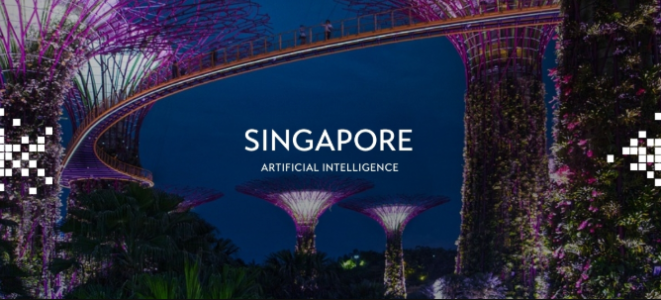AI’s transformative potential in addressing urgent climate challenges and driving sustainable solutions.
SINGAPORE: As artificial intelligence (AI) continues to evolve, its potential to combat the pressing challenge of climate change is becoming increasingly evident. From predicting extreme weather to improving energy efficiency, AI is emerging as a critical tool in the global fight against environmental crises.
With the World Meteorological Organization warning in May that global temperatures could surpass the critical 1.5°C threshold within the next five years, the stakes are high. This temperature increase represents a point of no return, where the effects of climate change become irreversible.
Singapore is already feeling the impact, with record temperatures of 37°C in May and projections of 40°C days as early as 2045. Against this backdrop, companies and researchers are leveraging AI to mitigate and adapt to the effects of climate change.
Transforming Urban Environments
AI is playing a “pivotal” role in helping policymakers address climate challenges, said Kate Brandt, Google’s Chief Sustainability Officer. One key challenge is managing the vast amounts of complex data needed to develop actionable solutions.
Mitigation and Adaptation:
According to Professor Ivor Tsang, director of A*STAR’s Centre for Frontier AI Research, AI aids in both mitigating emissions and adapting to climate impacts. In urban settings, it enhances the energy efficiency of buildings and microgrids and accelerates the development of green technologies.
Energy Efficiency in Data Centers:
Google’s data centers, including those in Singapore, use recycled water for cooling, making them more energy efficient than traditional centers. While the energy demands of AI are growing, innovations like selecting only the most relevant data and developing energy-efficient hardware can help reduce the carbon footprint of AI technologies.
Disaster Prediction and Prevention
In Southeast Asia, where extreme weather events like typhoons and flooding are common, AI-driven solutions are improving disaster response.
Flood Forecasting:
Google’s hyperlocal flood forecasting models can predict riverine floods up to seven days in advance, providing communities with critical time to prepare and potentially reducing fatalities and economic damage by up to 50%.
Air Quality Monitoring:
AI-powered systems monitor real-time air pollution levels, offering timely warnings and enabling public agencies to make informed decisions to improve air quality.
Innovating Green Energy Solutions
AI is also being used to develop energy storage solutions and optimize renewable energy systems like solar and wind power. In a green-energy future, AI can help manage the intermittent nature of renewables, facilitating a transition to decentralized grids.
For instance, AI models improve building ventilation designs, reducing reliance on air-conditioning and increasing energy efficiency even as temperatures rise. These technologies also enable predictive modeling for “digital twinning,” allowing greener operations.
Driving Collective Action
AI is also empowering consumers with sustainable choices. Google Maps now recommends optimal charging stops for electric vehicles in Singapore, considering factors like traffic, charge levels, and energy consumption.
While large corporations like Google lead in AI-driven sustainability, smaller companies play an equally vital role. With their local insights and on-the-ground expertise, they can implement hyperlocal solutions.
Funding Innovation:
Google.org, Google’s philanthropic arm, committed US$1 million to Singapore’s Mandai Nature initiative last year. It also recently pledged an additional US$5 million to AVPN’s APAC Sustainability Seed Fund, bringing its total funding to US$8 million over two years.
A Collaborative Future
The challenges of climate change demand collective action, and AI offers a pathway to scalable, data-driven solutions. As the technology matures, its applications will expand, addressing everything from carbon capture to creating sustainable urban landscapes.
With AI’s ability to process vast amounts of data and deliver actionable insights, it has the potential to reshape our approach to one of humanity’s most pressing challenges: safeguarding the planet for future generations.








